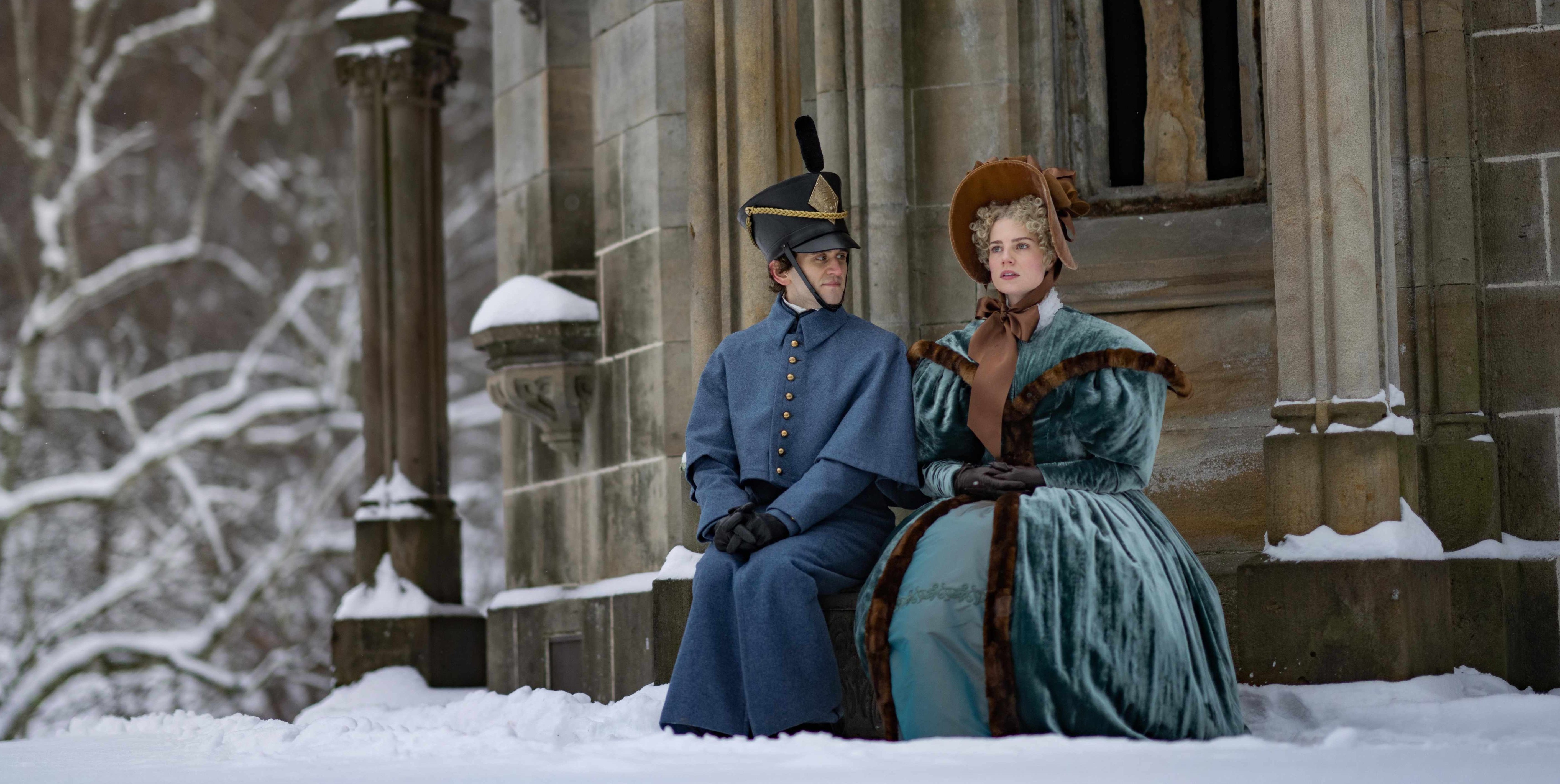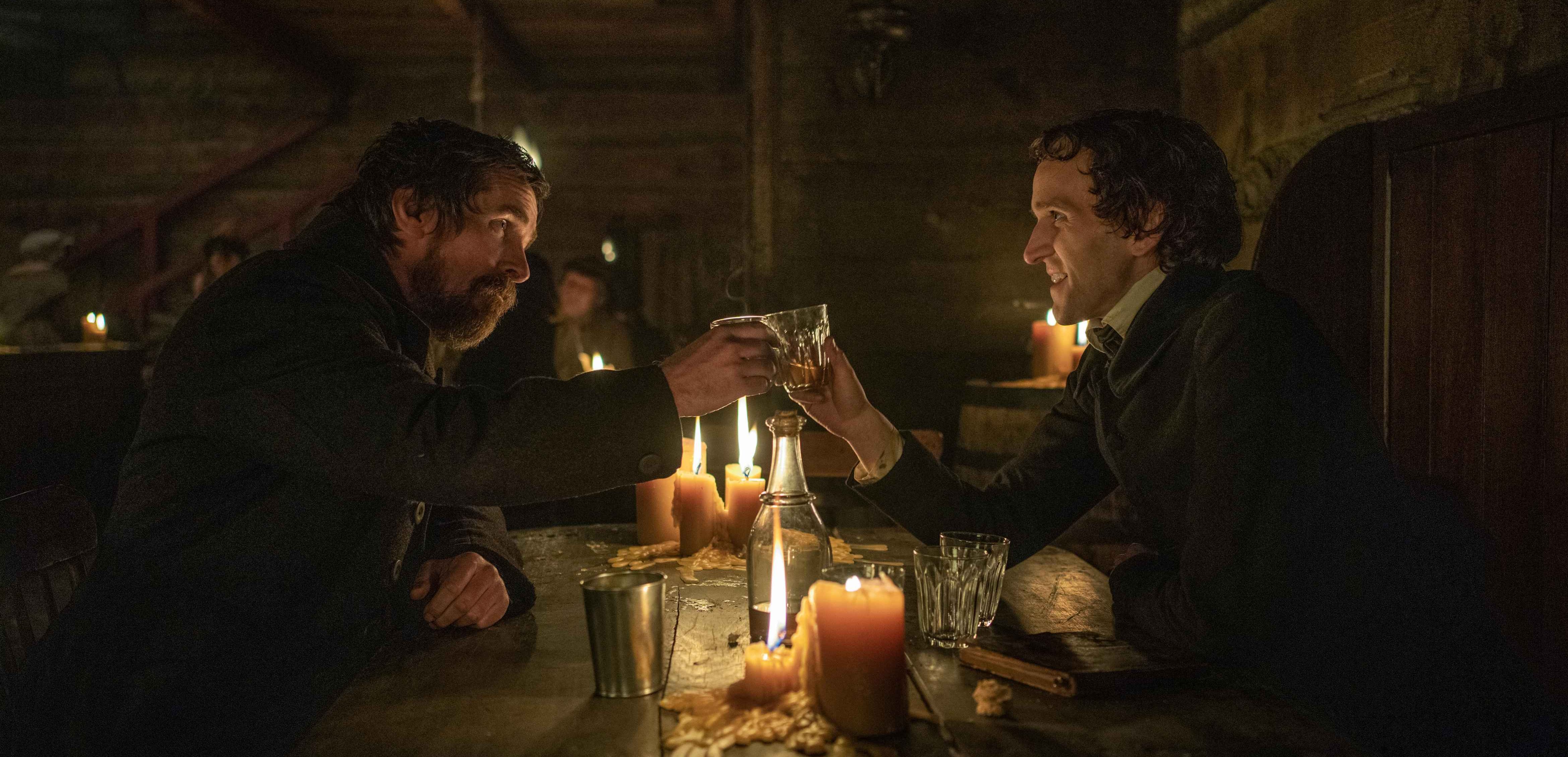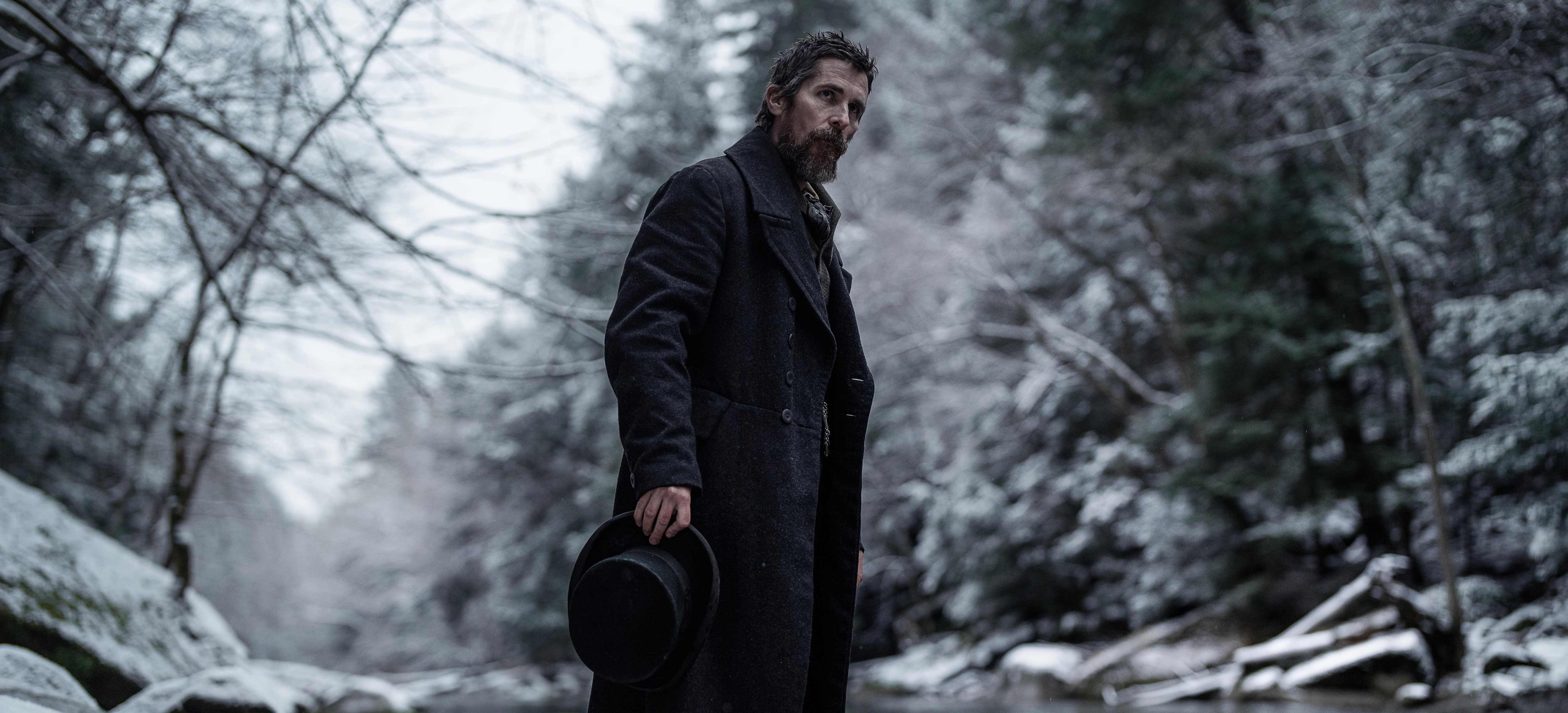Directed by Scott Cooper, Netflix’s murder mystery film ‘The Pale Blue Eye’ follows Detective Augustus Landor, who investigates the murder of Leroy Fry, a Military Academy cadet whose heart gets mysteriously removed from his dead body. Landor teams up with another cadet and published poet Edgar Allan Poe to unravel the mysteries that revolve around Fry’s life, leading them to startling revelations about themselves. Since one of the film’s two protagonists is not only a real-life figure but also one of the greatest writers of all time, the viewers must wonder whether the film has any true story behind it. Well, here’s what we can tell you about the same!
The Pale Blue Eye: Louis Bayard’s 2003 Novel
‘The Pale Blue Eye’ is not based on a true story. Scott Cooper’s film is an adaptation of Louis Bayard’s eponymous 2003 historical novel, a fictional account of Edgar Allan Poe’s emerging days as a poet. Like the character, Poe did attend the Military Academy during his early years as a poet. However, every detail accompanying this fact in the novel was conceived by Bayard and adapted to the screen by Cooper.

The author, like the director, ultimately wanted to create a fictional “origin story” for the acclaimed writer, influenced by the works of the same. Bayard’s decision to integrate typical Poe themes like occultism and satanism into the narrative of his novel wasn’t accidental. “This is really an Edgar Allan Poe origin story, so you have to have the themes that ultimately influence this young unformed writer to become the writer he became,” Cooper told Collider.
“What I’m saying is: these events that occur in our film shaped his worldview and helped him become the writer that he became – with the recurring themes that deal with the questions of death and the effects of decomposition and reanimation of the dead and mourning – all those things that are considered part of his dark romanticism,” the director told Netflix’s Tudum. Bayard conceived Poe’s fictional origin story as a father-son relationship drama, leading the writer to create Detective Augustus Landor.
“I needed a detective, somebody who could be Poe’s mentor and father figure as they solved this crime together,” Bayard stated in the same interview. The author dived into Poe’s bibliography to come up with the detective’s name. “The name Gus comes from C. Auguste Dupin, who was the detective in Poe’s stories ‘The Murders in the Rue Morgue’ and ‘The Purloined Letter,'” the author added. As far as the last name is concerned, Bayard sought the same in Poe’s short story ‘Landor’s Cottage.’

The father-son relationship between Landor and Poe and the latter’s togetherness with Lea Marquis enabled Cooper to offer a fictionalized but unconventional portrayal of the world-renowned writer. “I wanted to tell a formative Poe story, where he is warm and witty and prone to poetic and romantic fantasy, and someone we’re not accustomed to seeing on the screen,” Cooper told Deadline.
By offering such a portrayal of Poe, both Bayard and Cooper deconstructed the scary notions associated with the “master of the macabre” and explored the vulnerabilities he might have had as an emerging poet. Although the author and the filmmaker’s works are fictional, they had to keep their works rooted in reality since they were fictionalizing a real-life figure’s life. Thus, the setting of the actual United States Military Academy, located in West Point, New York, enhances the authenticity of both the novel and the movie.
But ultimately, both Bayard and Cooper weren’t interested in a biographical account of Poe. “It [adapting Bayard’s novel] allowed me to do three things: make a film that’s a whodunit; [tell] a father-and-son love story — a kinship between two men who are loners who live on the margins of society; and then, of course, this could serve as a Poe origin story,” Cooper told Tudum about the foundations of his film.


You must be logged in to post a comment.